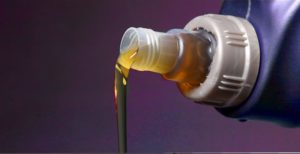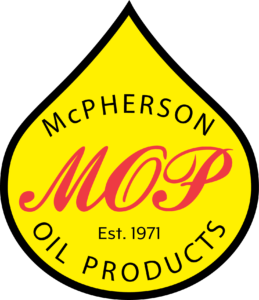Additive Chemistry: The Inside Story
21 Sep 2020, Posted by in Industry InformationFinished lubricants are formulated from a blend of base oils and a wide range of chemical additives, which can account for up to 20 percent of the formulation.

These additives play a crucial role in lubricant performance, often enhancing base oil qualities, such as oxidation resistance and corrosion control, or imparting new properties, like detergency. Some additives are even specialized for dedicated applications, such as pour point depressants for oils used in lower temperatures or extreme pressure additives for heavy-duty gear oils.
The mechanisms by which these additives work vary widely depending on their chemistry and function, but combining additives of vastly different chemical make-ups in one lubricant formulation is a highly complex task.
In order to shed some light on the intricate nature of additive chemistry, check out this Q&A session with Tom Dietz, ExxonMobil’s former Global Industrial Lubricants Technical Manager, to address a few questions on the subject.
Tom, how does ExxonMobil’s approach differ from the traditional lubricant formulation methods when it comes to additive chemistry?
At ExxonMobil, we have traditionally taken the approach of building formulations on a component-by-component basis, in an effort to provide customers with a differentiated product that contains the proper balance of properties. Another approach, on the other hand, is to opt to use additive packages that require less research investment but often deliver performance similar to competitive offerings. Depending on the application, either of these approaches is acceptable, provided the formulation maintains balanced performance.
As for the process itself, the first step in the formulation is the selection of high-quality base stocks. Once again, ExxonMobil has an advantage as our affiliates are leading producers of a wide range of base stocks – both mineral and synthetic. This deep knowledge of basestock performance provides us with the capability to select the right base stocks for the targeted lubricant application.
Next, various performance additives are chosen with specific benefits in mind. In many formulation programs, we will experiment with a wide range of additive components to ensure we can provide a unique performance advantage in selected areas, while at the same time maintaining performance in other key areas such as oxidation stability, system cleanliness, shear stability, demulsibility and foam performance. We always try to ensure that the performance of the targeted feature does not inhibit the performance of other critical lubricant functions.
Since chemical additives with similar mechanisms can compete with and inhibit each other, how important is formulation balance when considering additive chemistry?
It’s absolutely essential. For example, it is very easy to increase oxidation stability with some additive chemistries, but while the TAN build-up in a formulation may be inhibited, the improved antioxidancy can often be at the expense of sludge and varnish build-up. In this instance, oil analysis results may tell the user that the oil condition is fine, but when the system is opened, users may find that heavy deposits have formed on system components, leading to other operational issues.
Another example is the use of low molecular weight polymers with poor shear stability to increase the VI of a product. While the datasheet may look great and the formulation cost minimized, the end-user will see rapid viscosity loss in use, jeopardizing equipment protection.
In the end, additives have to work in conjunction with the base stock system to ensure that the lubricant is developed with all performance parameters within acceptable levels.
Once we complete the product formulation process in the lab, we validate our work with field demonstrations. While the laboratory is ideal for understanding performance in a well-controlled environment, we can’t anticipate all the scenarios that may exist in a range of real-world plant environments, which is why field testing is key.
Finally, there are a number of additives marketed to be used as top treats, or an addition, to the oil already in service to replenish certain performance attributes of the oil, such as an anti-foam top treat. What are your thoughts on using these additives in oil in an application?
The effort that goes into the formulation of a high-performance lubricant is considerable and in this effort, you learn that many combinations of additives simply don’t work well together. Adjusting a formulation in the field is even more challenging, as the usual cause of a performance problem is the introduction of some type of contamination into the system.
In these cases, the revised formulation has to perform with this contamination and an additive boost that may or may not be fully compatible with the original formulation. On rare occasions, the additive boost might not impact the performance of the original formulation, but the odds are that you will create more issues with the additive fix.
My advice instead, is to invest the time to understand the true root cause of the problem, fix it, and refill the system with fresh oil. In the end, this approach will save both time and money.
Source: ExxonMobil’s Lube Talk
McPherson Oil is an Authorized Mobil Distributor.
McPherson Oil, a family-owned and operated business, has provided the southeast with quality products and services since 1971. As a proud distributor of ExxonMobil products, we offer these services through our belief in TPM – Total Petroleum Management. Through our TPM program, McPherson brings a valued-added difference to its customers by meeting all of their petroleum needs. Our commitment to our customers is reflected in our company vision and mission statements. McPherson proudly services Alabama, Arkansas, North and Central Georgia, Mississippi coast, Florida panhandle, Greater Chattanooga Area, the Greater New Orleans Area, and Louisiana Gulf Coast.
